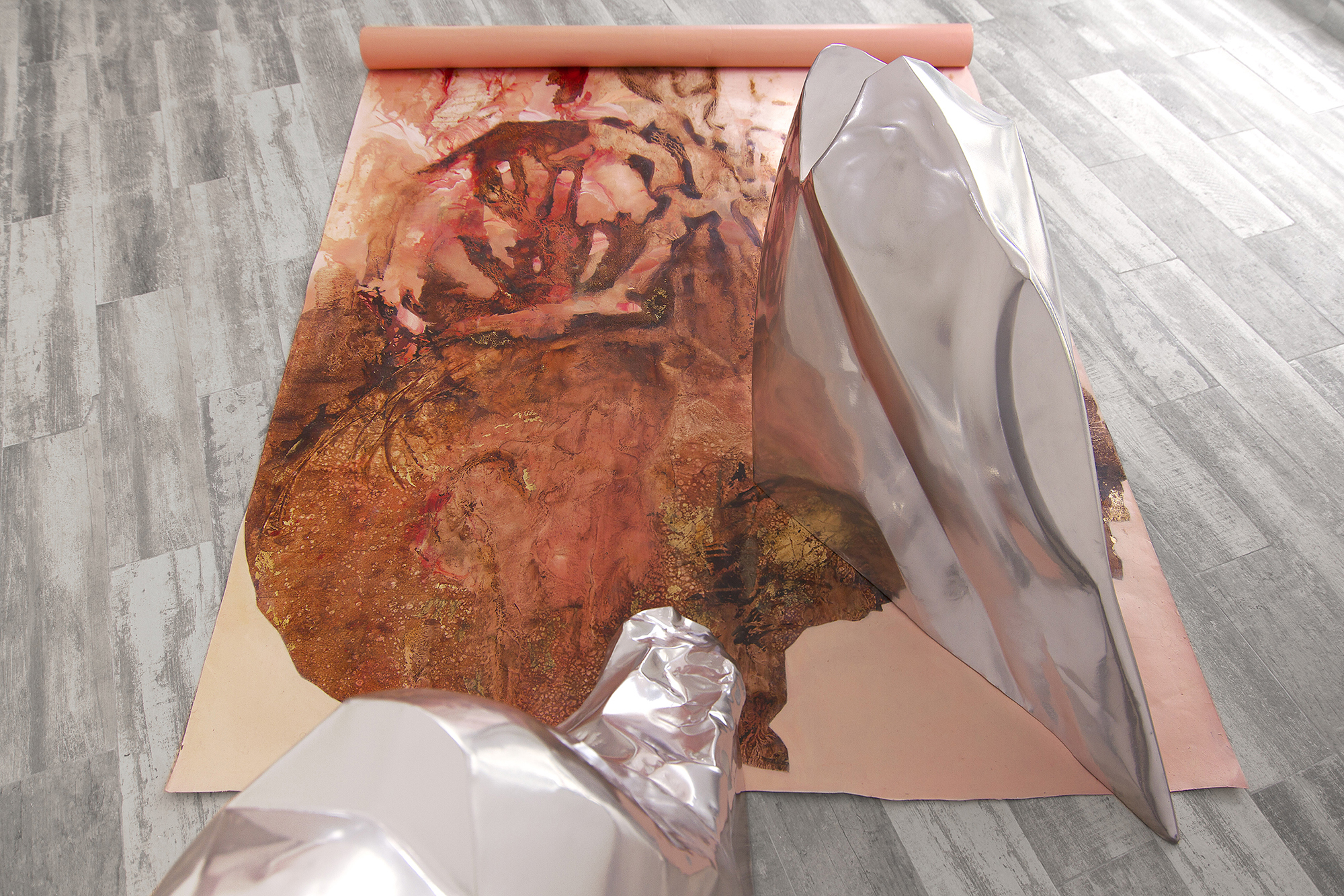
Internal scrolls | ‘Phototranspher’- Duel show- Hanita Ilan and Mahmood Kaiss 2018 | IDRIS Space |Curating and Text Tali Kayam |
Photography: Barak Rubin








The painting was created from a material dissolution of paint and various liquids on which I built more and more layers. The paintings in the show were presented as if they were papers that had been digested, revealing from the layers like visions: animals and landscapes that had been destroyed, mixing together as if in a bowel movement. The exhibition featured a long scroll painted on both sides. The process of working on the scroll was based on the biblical description of the prophet Ezekiel swallowing the scroll of people of Israel's destruction as a preliminary act to prophecy. The textures and physical coloration were reflected in Mahmoud's silver sculptures made from wrecked car parts.